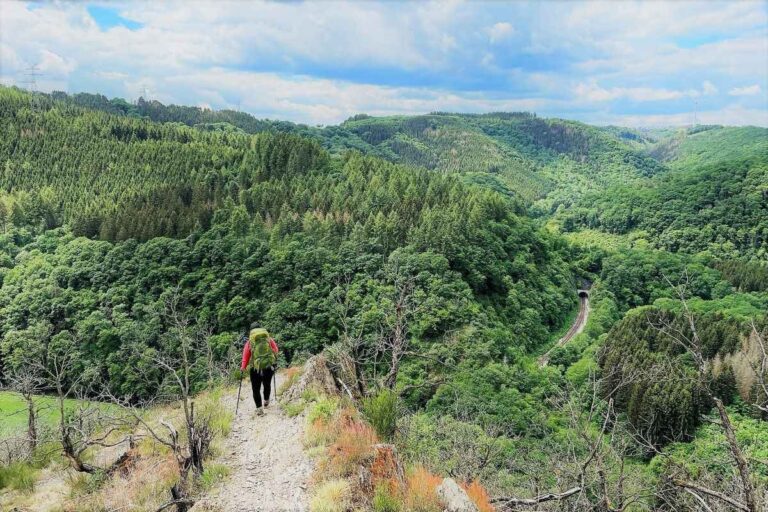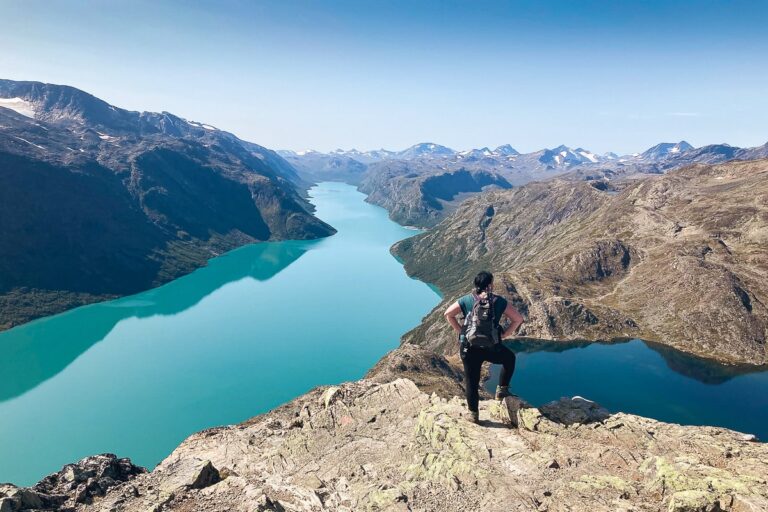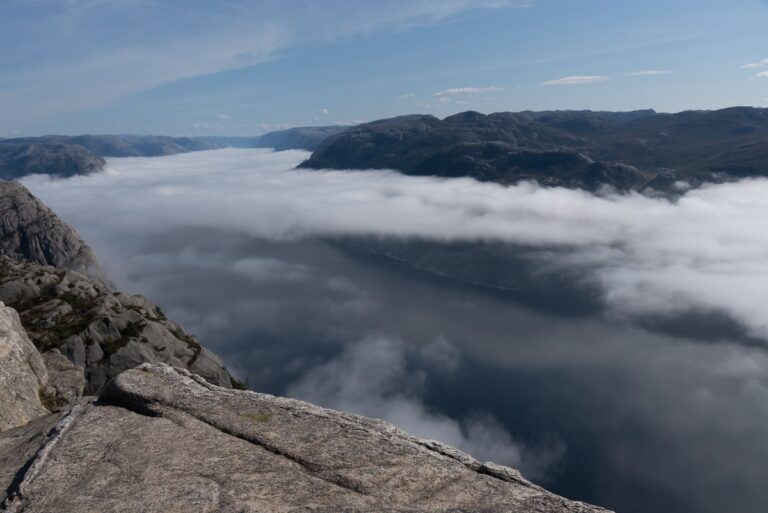Table of Contents
One of the most rewarding experiences during our time on the road was an independent trekking at the Khovsgol lake in Mongolia. There lies a lot of adventure in taking your backpack, stuffed with only the bare essentials to survive and hiking for 5-7 days. But before you hit the road, there are some things you should keep in mind. In this post, we want to share some advice and tips when preparing for an independent hike.
1. Choosing your route and area to hike
Choosing the area and the route you will be hiking is one of the most important steps during your preparation. Khovsgol lake was our first independent multi day hike / trekking. The first reason we chose Khovsgol was that we knew we weren’t experts in reading a compass. Being able to stay close to the shore of the lake assured us that we would never get lost. Another reason was that this lake is full of fresh water. During the entire trip, our source of hydration was lying next to us.
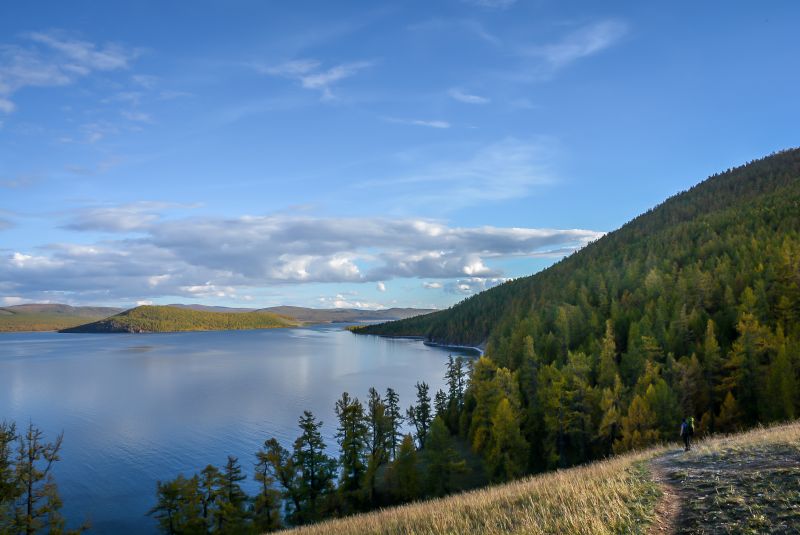
When choosing your route and area, keep this checklist in mind:
- Are there enough rivers nearby or a lake to have access to water?
- Is there a map of the area available?
- Can you follow a hiking trail or do you need a compass?
- Is the route in line with the amount of days you have to hike? Hiking with a heavy backpack cannot be underestimated. It is wise to have a rehearsal hike for one day, so you can estimate how many kilometers you can walk in one day. Aim for 10 to 15 km for a beginner / intermediate hike. This gives you enough margin if something doesn’t work out as planned (sore feet, bad weather, taking a wrong turn).
- Keep in mind whether the route is mountainous or flat, this will influence the amount of kilometers you can cover in one day.
- Are there any dangers when hiking in his area (for example bears) and should you take precautions
- How and where will you be able to seek help if something goes wrong? Always have a back-up plan (e.g. A nearby guesthouse you can call). Be sure that you are able to find help within a couple of kilometers and you should be fine.
- Is it possible to make a loop or do you need transportation from your end point back to the start of your hike.
Before you leave on your trip, always seek for advice with local people. They know the region best and will be able to give you correct advice. Also, always inform someone about your route and your expected date of return.
2. Lightweight packing list
You will need a totally different packing list for an independent hike than for a beach vacation. Below, you can find some essential things to take with you.
A stove and cooking material
During your hike you will have to cook your food every evening. A gas stove is therefore essential. When looking for a gas stove, be sure that you buy one with a universal fitting. For example, in Europe, we have stoves that have a fitting that is unique for Campingaz (the blue gas containers). However, Campingaz is only available in certain countries, but for example not in Mongolia. If we had bought a stove that didn’t had a universal fitting, our gas stove would have been totally useless. Be sure to carry enough gas with you, so you don’t end up without gas during the last days of your hike. We also recommend to take a Swiss army knife with you and finally, you will also need some cooking pots and cutlery.
A lightweight tent
When you have to carry all your material on your back, you want everything to be lightweight, including your tent. We opted for the Quickhiker ultralight tent. However we chose for a 3-persons tent instead of a 2-persons. That way, our backpacks easily fitted inside the tent and we had extra room for cooking during cold or rainy evenings inside the tent. The difference in weight was only 300 grams but the extra space added a lot of comfort.

Sleeping material
To make your nights comfortable, invest in a high quality sleeping mattress and warm sleeping bags. When you’re heading to colder regions, make sure your material is well suited for cold temperatures (also see the last section of this post for more tips on that).
Clothes for different types of weather
Be sure to pack different types of clothes so that you have an outfit for every type of weather. So even when it is hot during the day, be sure to take a warm sweater with you when the night gets colder. Take sunscreen with you, but don’t forget a rain jacket as well.
Lighter
This is really an essential item, not only for cooking, but also for starting a campfire. Because no camping spot is complete without the sound of crackling burning logs. As a reminder, don’t put your tent too close to the campfire, to prevent burning holes in your tent.
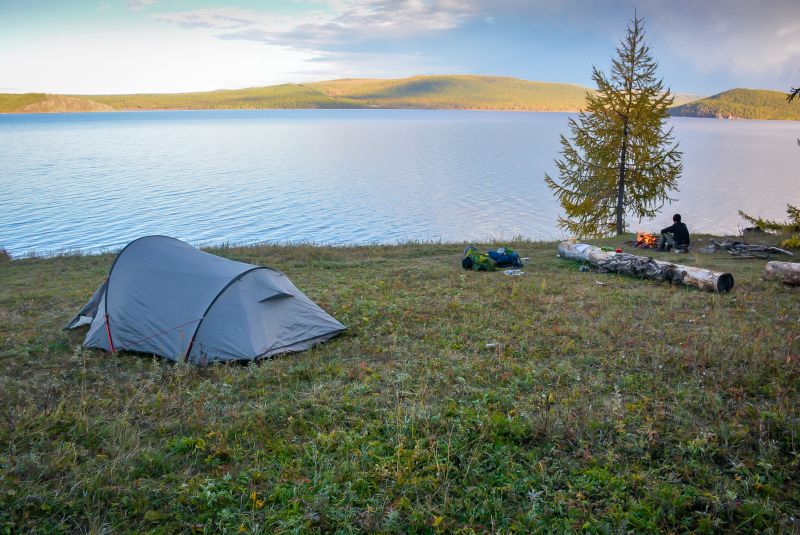
The most important advice: every ounce counts
If you are in doubt if you would maybe use that item during your hike, leave it at home. For instance we took our powerbank with us but never used it. Our smartphone lasted the whole 5 days by switching it only on for GPS coordinates.
Another tip to reduce the weight you are carrying with you is by making a meal plan. Carefully think day by day what you will eat for breakfast, lunch, snacks and dinner. Don’t do like us and estimate on average how much food you will need for 5 days. After two weeks we were still ‘enjoying’ our leftover oatmeal from our hike.
3. What to eat during your independent hike
Carbohydrates will be essential for your energy level. Taking the right food with you on the hike is therefore crucial.
In adventure shops, you can find a huge assortment of freeze-dried meals. Because it is lightweight, it is definitely worth considering, but keep in mind that these meals are rather expensive.
Other options that worked really well for us and that are less expensive are:
- Oatmeal: it is not expensive, but it gives you a lot of energy in the morning and it is easily prepared just by boiling water. We bought Quakers flavor variety pack, with individual sachets and different flavors. That way, we had some variety in our breakfast.
- Instant noodles: they are easy to find (especially in Asian countries), they are extremely lightweight and they are super cheap. Easily to cook by just boiling some water and ideal during cold nights.
- Pasta: pasta also gives you a lot of energy, and we especially like the instant pasta sachets as they weigh not more than 50 grams. Just add water to get a pasta with a sauce. The disadvantage of pasta is that it has to cook for several minutes, so it uses a lot of gas every time you prepare your meal.
- Snickers: our favorite in-between snack, as it gave us a lot of energy in the afternoon. When looking at the nutrition facts this is a well balanced option for a lot of calories within a very little amount of weight.
- Dried fruits and nuts: these are also excellent as an in-between snack.
4. Keep yourself warm during cold nights
It depends on the region where you are planning to hike, but when it gets really cold in the evening, you want to take some extra measures for keeping you warm at night. Below you can find 7 tips that we tried ourselves and that really worked for keeping us warm:
- Fleece sleeping bags: we just have a standard sleeping bag (comfort temperature around 3°c), but it is very compact and lightweight. In addition to these sleeping bags, we also carry two fleece sleeping bags with us. You can also use them as a blanket when waiting for trains or planes.
- Zip your sleeping bags together. It works the same as a pair of mittens compared to hand gloves. Mittens will always be warmer because you share the warmth with the other fingers.
- Keep your tent ventilated. It may sound counter intuitive but opening the tent a little will prevent condense. What’s wet, gets cold. That’s also why breathing inside your sleeping bag may seem tempting to keep you warm, but in the long run it’s a bad idea.
- Put on a hat as you lose the most of your body heat via your head.
- Eat well before you go to sleep. Calories equals warmth. So put a Snickers underneath your pillow for when you wake up in the middle of the night with cold feet.
- What’s underneath you is more important than what is above you. A good isolation layer between you and the cold ground is the most important thing you have to be aware of. For instance we have done the test with our fleece sleeping bags by laying it above us for one night and underneath us the other night. The fleeces underneath us definitely felt the most comfortable and more warm.
- It might not be the sexiest outfit ever, but long woolen underpants and shirts really help keeping you warm when it is freezing outside the tent.
Excited to go camping? Have any tips to share with other travelers? Please share your advice in the comments below. Thanks for reading and don’t hesitate to share this with others.
Happy hiking!
Matthias and Mieke
